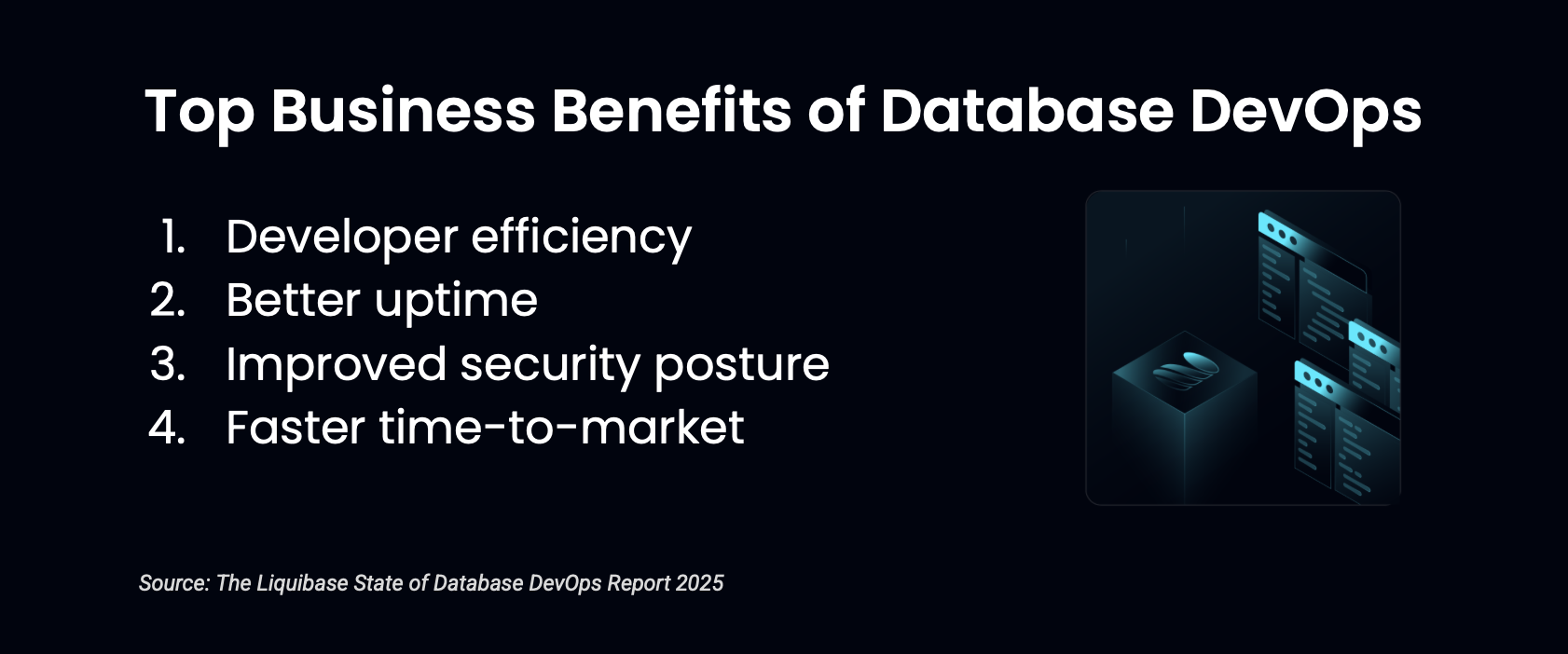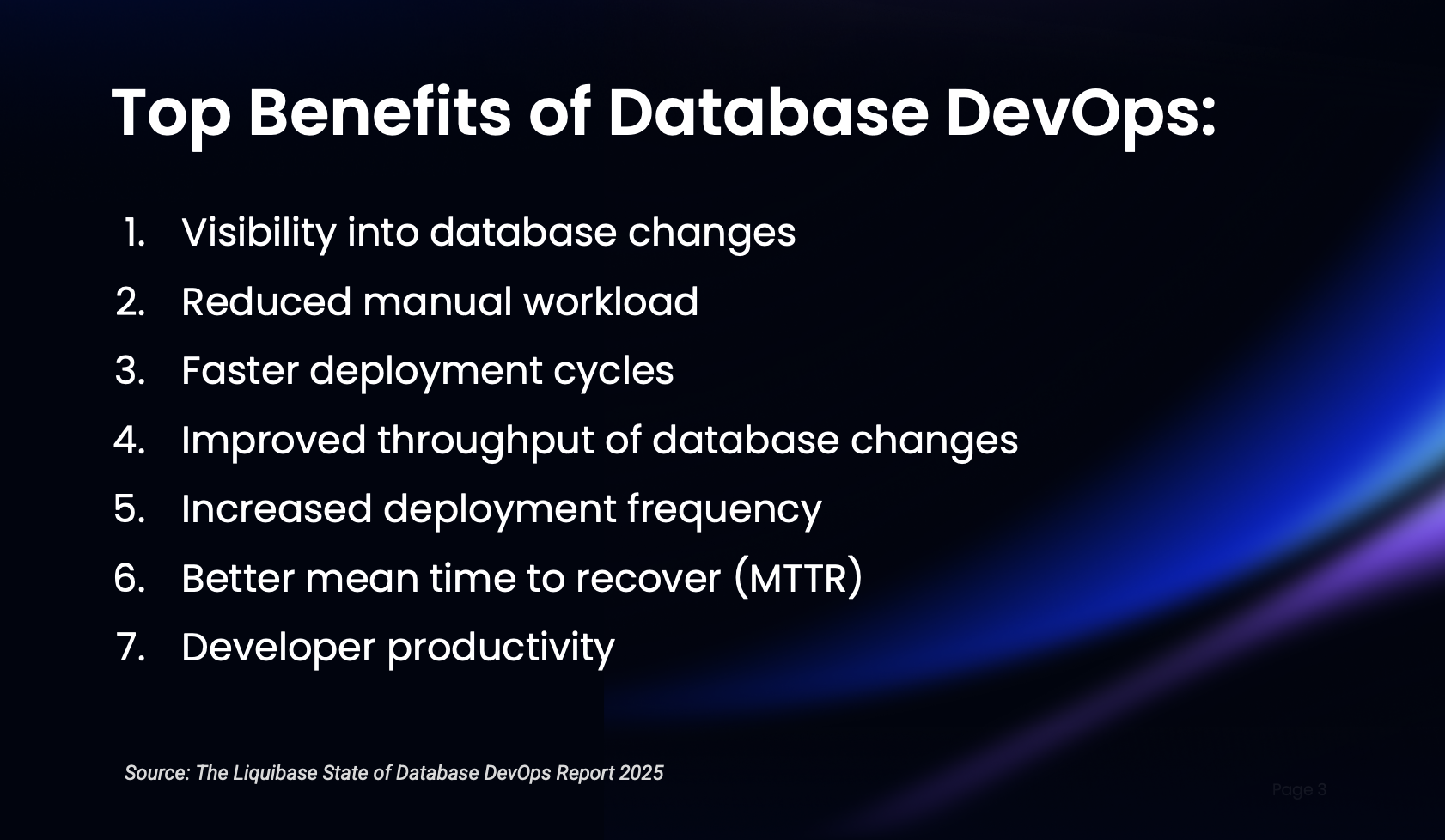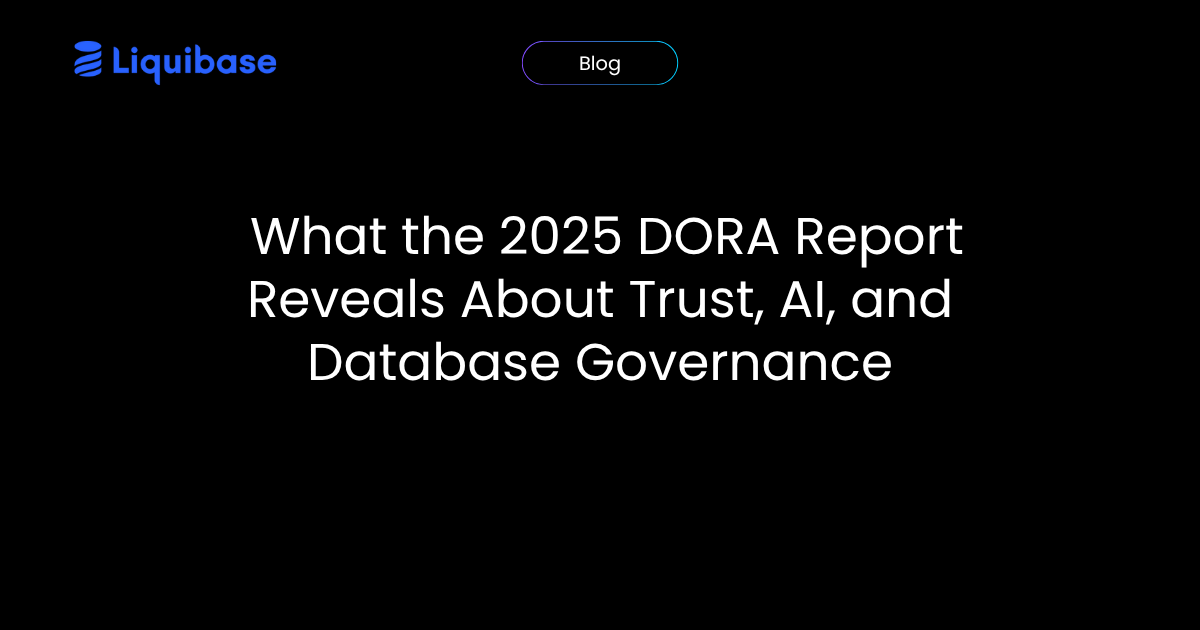State of Database DevOps Report as of 1H:2025
For too long, database changes have been a source of frustration and late-night emergencies. The success of database devops proves there is a better way.
July 21, 2025
See Liquibase in Action
Accelerate database changes, reduce failures, and enforce governance across your pipelines.

The 1H:2025 edition of the State of Database DevOps Report offers a blunt assessment that reflects the findings of 2024: database change management is still the weak link in the DevOps pipeline, but the tide is turning. As AI/ML workloads ramp up the pressure on data infrastructure, organizations with immature DevOps practices are falling behind, while those with automated, integrated pipelines are thriving.
Key Findings:
- AI/ML Is a Stress Test: 25% of early-stage DevOps teams cite AI/ML and data pipeline complexity as their top challenge. For mature organizations, it's business as usual, only 10% see it as a significant hurdle. These teams are more concerned with refining visibility and tightening security.
- Complexity Is the Bottleneck: The biggest barrier to adoption? Integrating database workflows into DevOps. Over half (54%) cited integration complexity, compounded by a glaring lack of skills and training (43%).
- Visibility Over Speed: While speed grabs headlines, the real gain from database DevOps is transparency. 54% of teams point to improved visibility into database changes as the top benefit, followed closely by reduced manual workloads (53%) and improved security posture (42%).
- Security Is Non-Negotiable: Security and compliance were named the #1 challenge (48%). Accordingly, 43% of respondents are prioritizing automation in these areas. The shift reflects a growing demand for secure, observable, rollback-ready change management.
- Productivity Is the Prize: Half of respondents aim to boost developer efficiency. Deployment frequency, throughput, and reduced downtime are critical DevOps metrics driving investment in CI/CD, observability, and version-controlled schema changes.
Liquibase positions itself at the center of this transformation, touting tools like Policy Checks and Targeted Rollbacks to streamline compliance and reduce risk. Their growing influence, evidenced by 1.4 million daily operations and massive year-over-year download growth, highlights how essential modernized database workflows have become.

LB Quote: 1H:2025 major trends – AI adoptions, security concerns, 5.0 msgs
A Deeper Look - DevOps Maturity vs. Reality
Surveying global respondents across 25 countries (38% U.S., 22% India), the report finds only 7.5% of organizations at full DevOps maturity (“Optimized”), while 29% remain in early ‘Defined’ or ‘Initial’ stages. That gap is critical: immature organizations are getting buried under data complexity, 25% cite AI/ML workloads as their #1 challenge, versus just 10% of mature teams.
The Real Cost of Lagging Behind
For lower-maturity orgs, manual change reviews (56%), slow deployments (51%), and integration issues (44%) dominate. In contrast, mature teams automate CI/CD pipelines (54%), use version control for schema changes (53%), and apply automated checks for quality/security (42%).
Security is a top concern for everyone: 48% cite it as the biggest challenge, and 43% are adopting automation for compliance. Notably, 42% already report improved security posture from DevOps initiatives.
Visibility Trumps Speed
Despite hype about speed, 54% say visibility into DB changes is the most valuable gain, while 53% cite reduced manual workload. Only 48% list faster deployment cycles as a core benefit.
Further, 47% aim to improve throughput of DB changes, followed by deployment frequency (42%), MTTR (40%), and developer productivity (40%). Business-wise, 50% target developer efficiency, 44% want better uptime, and 40% prioritize security posture and faster time-to-market.

Adoption Barriers: It's Not Just the Tools
Integration complexity (54%) and lack of training (43%) are the top blockers. In fact, 30% are concerned their teams aren’t ready for automation. Budget constraints and resistance to change remain persistent.
Most orgs now use tools like:
- CI/CD deployment automation (54%)
- Version control for DB schema (53%)
- Observability tools (49%)
- IaC for DB provisioning (41%)
However, only 24% use Git-integrated schema tools, and just 14% are writing schema changes in IDEs, a sign many teams are still stuck in legacy workflows.
Bottom Line
Database DevOps in 1H:2025 is no longer optional, it’s foundational. Teams that invest in process maturity, cross-functional training, and automation infrastructure are pushing changes during business hours. The rest? Still crossing their fingers during midnight deployments.



.png)

.png)
.png)

.png)





